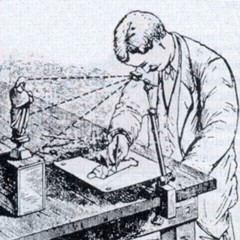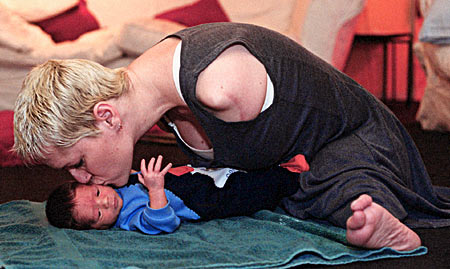I am keeping a page as a list of responses to the seminal book Camera Lucida by Roland Barthes. I will post additions as separate posts. Questions that are motivating this include;
What is the spirit of photography?
What can we learn from Camera Lucida – in our reading and taking of photographs?
Do your photographs help you understand your self and your life more?
What is the relationship between photographic and mystical experience?
Here is a short introduction to the ideas behind the book from WikiPedia;
Camera Lucida (in French, La Chambre claire) is a short book published in 1980 by the French literary critic Roland Barthes. It is simultaneously an inquiry into the nature and essence of photography and a eulogy to Barthes’s late mother. The book investigates the effects of photography on the spectator (as distinct from the photographer, and also from the object photographed, which Barthes calls the “spectrum”).
In a deeply personal discussion of the lasting emotional effect of certain photographs, Barthes considers photography as asymbolic, irreducible to the codes of language or culture, acting on the body as much as on the mind. The book develops the twin concepts of studium and punctum:studium denoting the cultural, linguistic, and political interpretation of a photograph, punctum denoting the wounding, personally touching detail which establishes a direct relationship with the object or person within it. (WikiPedia article)
11th Nov 2009 – This is the first post on inspirations from Camera Lucida
1 The Barthes book is much more than the pair of concepts ’studium and punctum’ – but their importance cannot be ignored. They give us a powerful, basic model with which to think about our responses in reading a photograph.
We have an overload of images everyday. To most we are more or less indifferent – they have no point, because they have no ‘punctum’ – punctum for Barthes denotes the wounding, personally touching detail that establishes for us a direct relationship with the object or person within it.
To be moved by any work of art requires a degree of sensibility. Sensibility, the developed consciousness of the reader, is vital in the reading of a photograph or any work of art. Most photographs deemed great are point-less for many.
2 The studium and punctum are special ways of referring to a) the apparent/evident context of a photograph and b) the emotional charge that (some) photographs have for us. The punctum is a text, or sub-text, within the con-text of the whole.
The emotional charge is not just ‘in’ the photograph. Sometimes there is a specific object that is clearly vital, sometimes not. The punctum as an identifiable object can vary from person to person. (Some of Barthes’ points are more those of a gay man). And subsequent readings can shift what we see as being the punctum-object.

This photograph was instrumental in Barthes’ developing the punctum-studium mode – see HERE for an interesting discussion of Koen Wessing’s photograph and of its importance to Barthes.
I asked my wife what was the punctum for her – she said the rifle, and the nun looking in the direction of the rifle. For me it is unquestionable the fact that the first nun is walking on regardless.
However with or without the punctum as an easily identifiable element in the construction of the photograph the punctum is wounding only to the sensibilty that can be wounded.
Cartier-Bresson spoke of the alignment of eye, heart, eye and camera in the seeing and taking of a photograph. The same is necessary for the reading of a photograph to provide you with an aesthetic experience. Photographs that are mere representations or illustrations or documents rarely provide the transcendent experience that I call aesthetic.
For this writer the aesthetic is an experience identical to mystical experience. The photograph takes you. It takes you out of the boundaries of self. You are dissolved for a time into the timeless. There is no object and you as separate subject – only a unitive experience.
Perhaps the intensity is proportionate to the extent that head, heart and eye are attuned in experiencing the photograph? Although, of course, great works of art are shattering.
3 The focus of meaning of Camera Lucida in English tends toward ‘mechanical device’.  Source – WikiPedia
Source – WikiPedia
Is there a confusion between camera obscura and camera lucida in the title of Barthes’ book? More likely
What if we literally translate La Chambre claire as clear room or room of clarity. Not just at the level of physical reality but as an inner space for experiencing (particularly) those photographs that lead to a greater understanding of our selves or of our world? To see more clearly, to gain in-sight.
Didn’t Picasso say something to the effect that he paints in order to see? As ‘the clear room’ or ‘room of clarity’ photography becomes the means by which we can see clearly, gain insight into the world and into ourselves.
Here I’m suggesting that the experience of reading a photograph is of two kinds. The first provides merely information about subjects that might or might not be one of our interests.
The second kind of experience, requires two elements. First there is sufficient sensibility. Secondly in the photograph there will be some element that acts like a terminal or lightning rod and causes not just high impact but deep and potentially transformative experience. The second kind of experience can ‘move the internal furniture around’ – and possibly extend the sensibility, at the centre of which is compassion. Both sensibility and a lightning-rod element in the photograph are necessary.
In the photograph of Alison Lapper is the punctum or is it the child’s hand, Alison’s foot, the kiss, the missing arm, the boy’s eyes that might be said to be staring into his future…… One of those or something else is the lightning rod – if we have the compassion and the sensibility.
The statue of Alison is called Alison Lapper pregnant, but it is we who are pregnant – the issue is whether we as a society can deliver ourselves of the next higher level of consciousness.
If you don’t know of Alison’s story and the great and good public debate it generated just Google her name.
There is one good article HERE
-0-


No comments:
Post a Comment